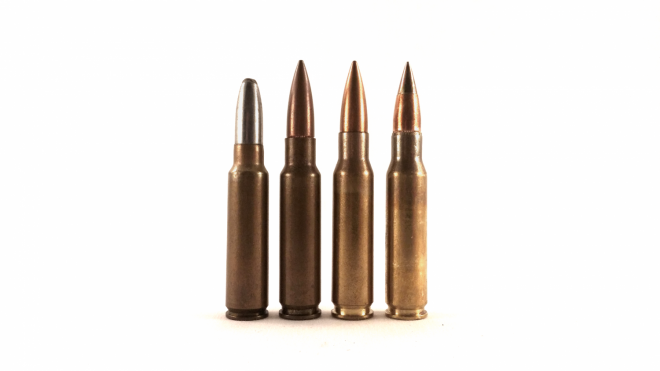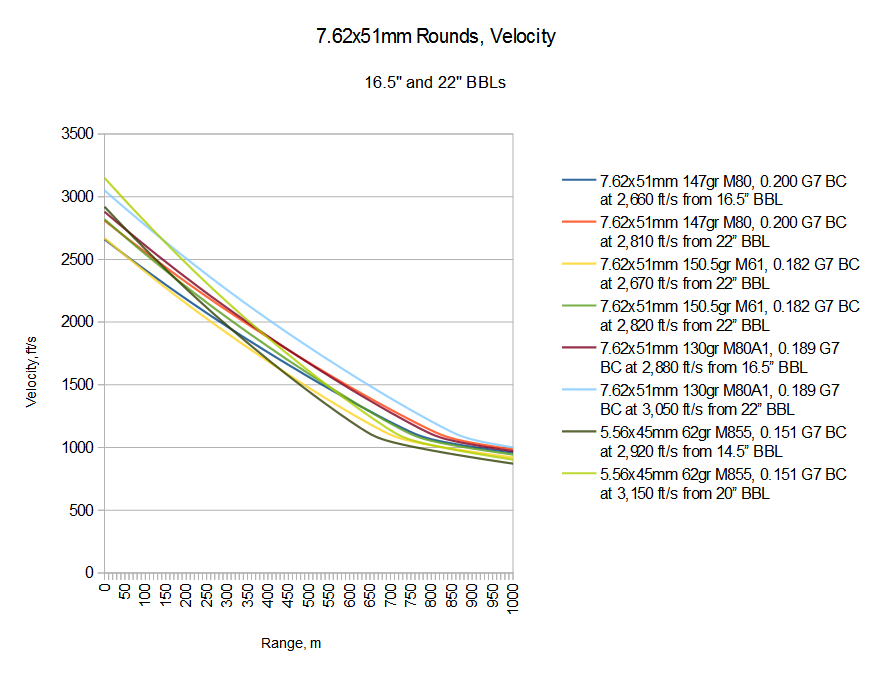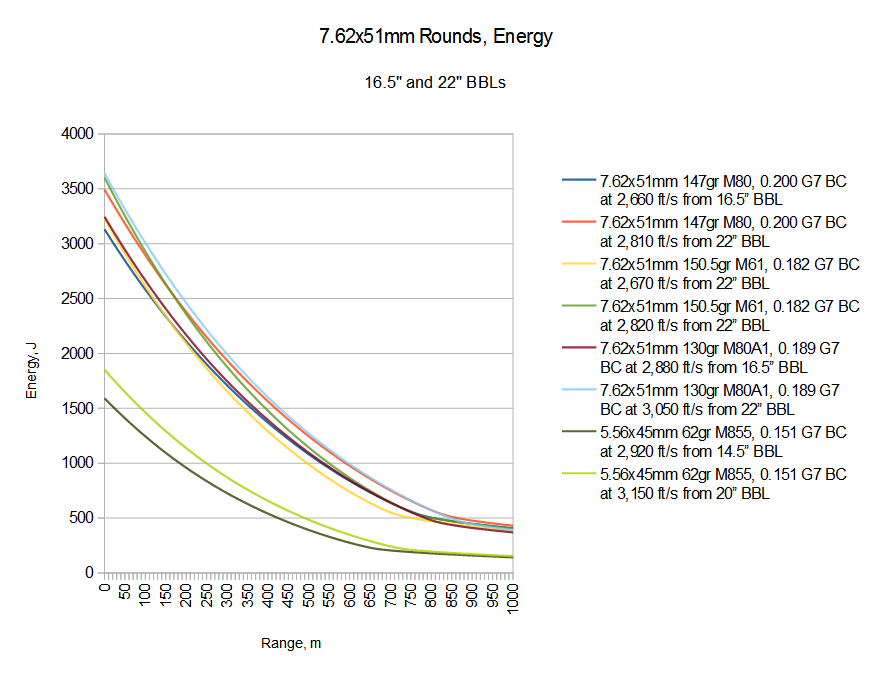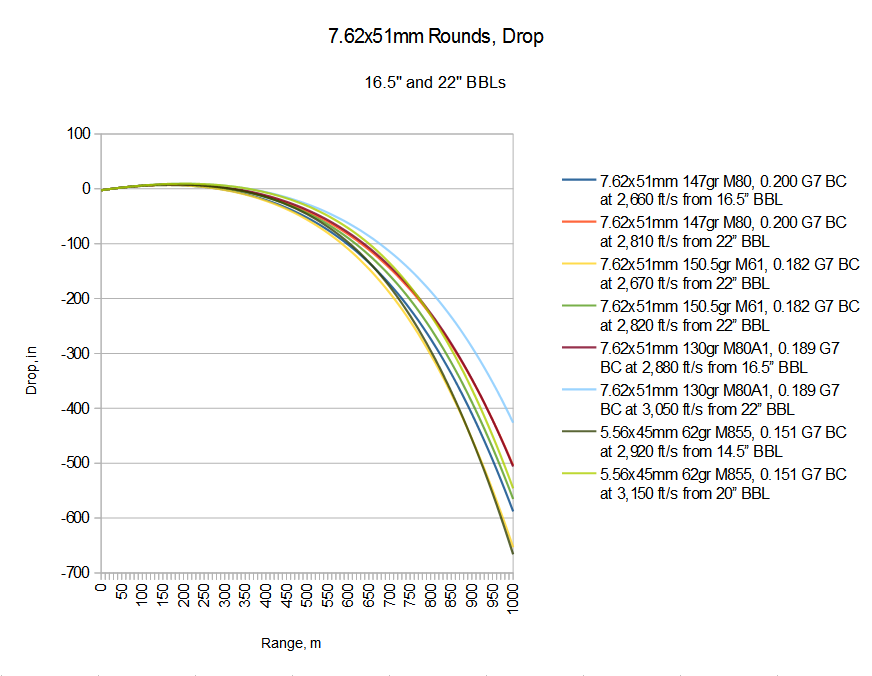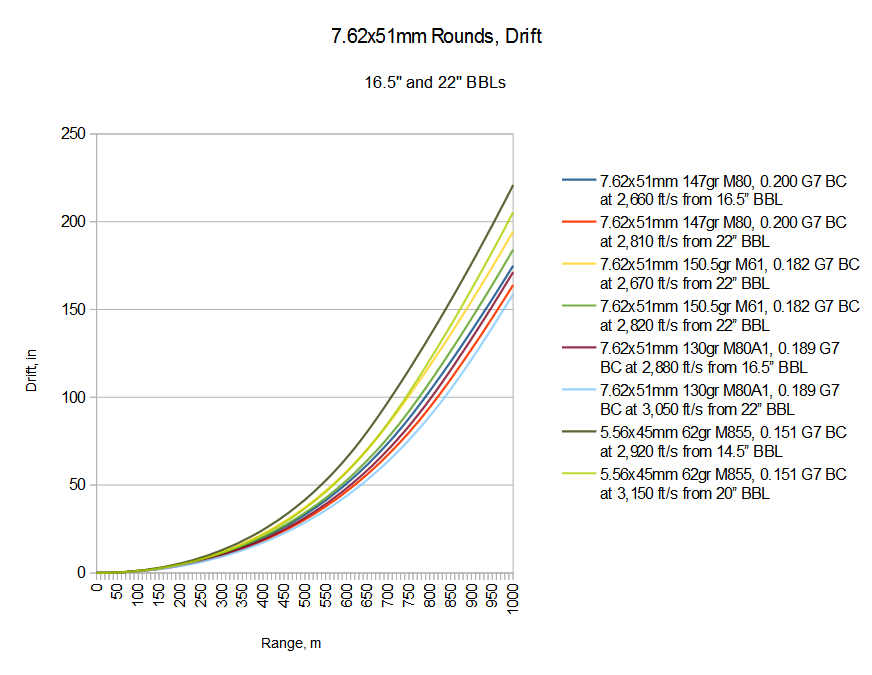Shouldn’t “Modern Full Power Calibers” be its own series? No, because then there would only be two episodes! So instead, we’re rolling today’s two most popular full power .30 cal rounds into the series on intermediates, primarily as comparison pieces. There are really two pieces of information I want to disseminate with this, which are the answers to “how do these full power rounds compare with intermediate calibers?” and “how do they compare against each other?”
A quick introduction to the 7.62 NATO caliber which we will be covering today: It was the first caliber standardized by the North Atlantic Treaty Organization, and remains the standard “full power” round for the Organization, even though it has been largely replaced by the 5.56mm in the infantry rifle role. Development of what during development was commonly called the “.30 T65” began in late 1943 or early 1944; memos from Winchester CEO Edwin Pugsley’s files early in 1944 spoke of a “feeling” that the ideal next generation rifle would fire a round based on the .300 Savage. This proved to be very prescient, as the earliest experiments in the program involved .300 Savage cases loaded with 152gr M2 bullets developed for the .30-06 cartridge. One of the impetuses of this program was the material saving promised by the new, shorter round. Page 304 of The Great Rifle Controversy cites that Colonel Studler had calculated in 1949 that if the new round had been used instead of .30-06 during World War II, 92 million pounds of brass would have been conserved, along with 70 million pounds of packing material!
The attraction of this smaller round was obvious, and after an controversial several year trial period, the .30 T65 was recommended for adoption in 1953 as the first NATO standard round, designated the 7.62x51mm NATO by Ordnance in 1954.
Ballistically, there are three rounds we need to consider here: The common lead-cored M80 Ball round, which in terms of ballistic coefficient and velocity is identical to the steel-cored M59 Ball round, the M61 armor piercing round, and the improved M80A1 Enhanced Performance Round (EPR). Note that the ballistic coefficient of M80A1 was calculated by me, but also that according to the paper Aerodynamic Characteristics of the 7.62 mm NATO Ammunition M-59, M-80, M-61, M-62, the M61 AP round experiences 10% higher drag than the dimensionally similar M59 Ball round because of the additional cannelure on the projectile. Now, let’s look at the graphs:
Great performance! Of course, the elephant in the room with 7.62 NATO is weight. And it’s a doozy, as 7.62 weighs about double what 5.56mm does, at 24.2 grams for M80, and 23.7 grams for M80A1.
Note: All ballistic calculations are done with JBM’s Trajectory calculator, using the ballistic coefficient appropriate to the projectile being modeled, and assuming an AR-15 as a firing platform. Also, keep in mind that there is no single true velocity for a given round; velocity can vary due to a large number of factors, including ambient temperature and chamber dimensions. Instead, I try to use nominal velocity figures that are representative of the capability of the round in question.
 Your Privacy Choices
Your Privacy Choices
